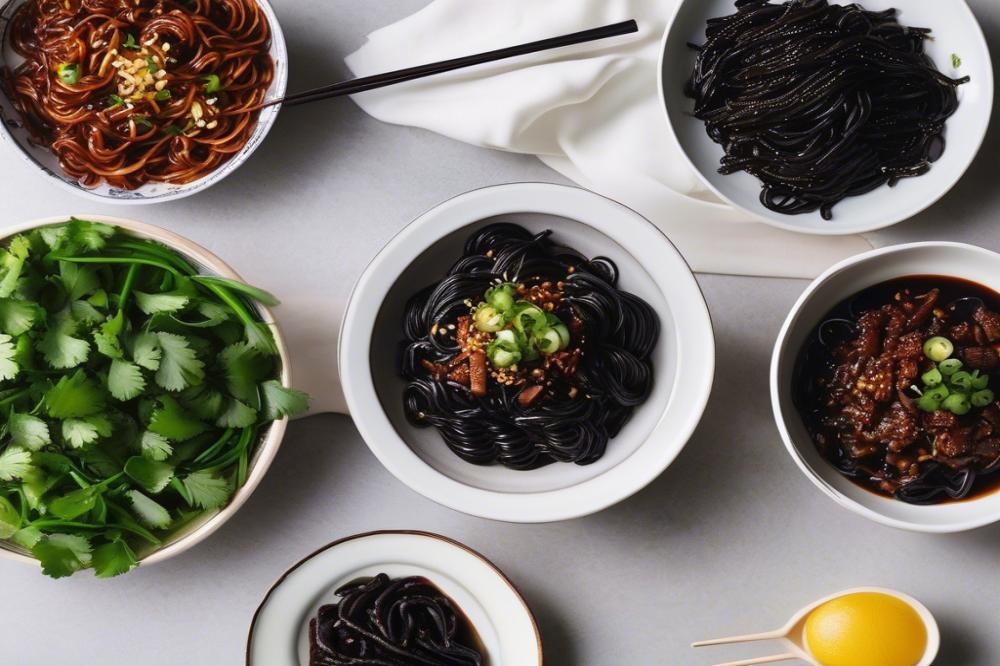The Art of Cooking Jjajangmyeon Black Bean Noodles
Korean cuisine is a rich tapestry of flavors and textures, offering something for everyone. One dish that stands out in this culinary landscape is a savory delight known as Jjajangmyeon. This creation features thick, chewy noodles tossed in a robust black bean sauce. Accompanied by various vegetables, it presents a comforting meal enjoyed by people of all ages.
As a staple in many households, it holds a special place in the hearts of Koreans. This dish is not only popular but also deeply rooted in the culture. Often found on the streets of bustling cities, jjajangmyeon epitomizes the essence of street food. It is a go-to choice after a long day. The smell of sizzling ingredients draws people in, making it a common sight in local food stalls.
Homemade jjajangmyeon invites creativity in the kitchen. Many enjoy preparing it themselves, experimenting with different recipes and cooking tips to find their perfect version. In doing so, the dish becomes more than just a meal; it transforms into a bonding experience within families and among friends.
This article aims to explore the art of cooking jjajangmyeon, providing insights into its history and preparation. Readers can expect to learn various aspects, from selecting the right ingredients to mastering cooking techniques. Join us on this culinary journey to create delicious Black Bean Noodles that will warm your heart and satisfy your taste buds.
Jjajangmyeon Overview
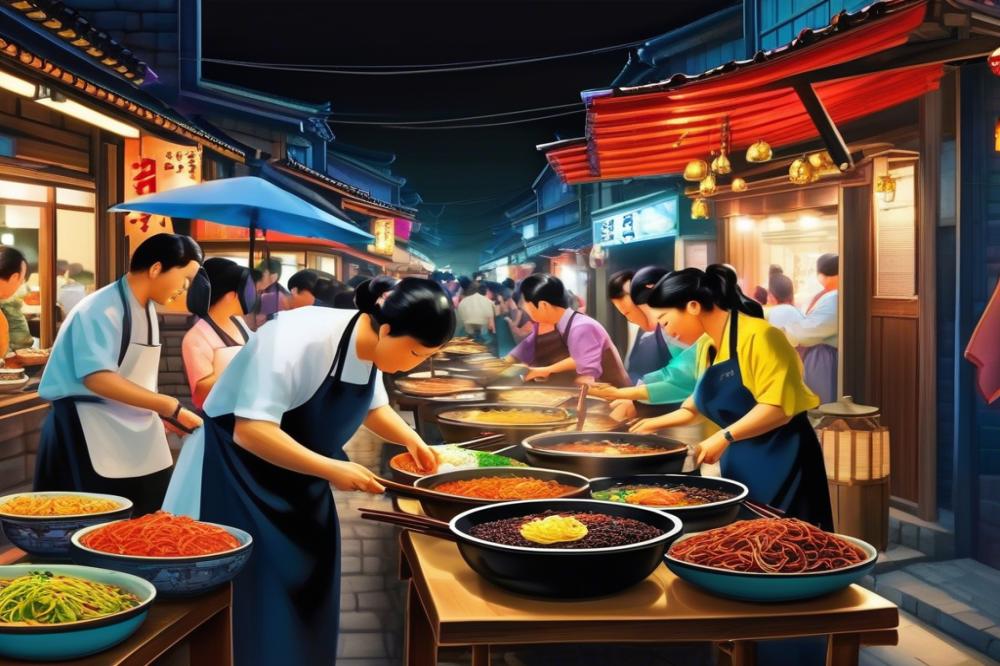

Jjajangmyeon is a popular Korean dish known for its thick, savory black bean sauce poured over noodles. Often, this meal includes various vegetables such as cucumbers, onions, and zucchini. Diners commonly enjoy it as a comforting dish, balancing flavors and textures in every bite.
History and Cultural Importance
This dish has a rich history, with roots tracing back to Chinese cuisine. Immigrants brought it to Korea in the late 19th century. Over time, local chefs adapted the recipe to create a version uniquely Korean. Today, it’s considered a staple in Korean food culture, often associated with family gatherings and celebrations. Many people view it as a symbol of comfort and home.
Variations of the Dish Across Regions
Different regions in Korea have their own takes on jjajangmyeon. In some areas, they use fermented black soybeans, giving the sauce a stronger flavor. Others may add seafood or meat, adding a twist to the traditional recipe. In cities like Incheon and Seoul, street food vendors often create unique versions, catering to local tastes and preferences. Each recipe reflects the area’s culinary influences.
Common Occasions for Serving
People often eat this dish during special occasions and leisurely meals. It is a popular choice for family dinners, where everyone can share and enjoy. Many celebrate Black Day, a holiday for singles in South Korea, by eating jjajangmyeon. This dish is often found at restaurants and street food stalls, making it a go-to choice for a quick lunch or dinner. Homemade recipes also allow for creativity while cooking.
Ingredients and Cooking Instructions
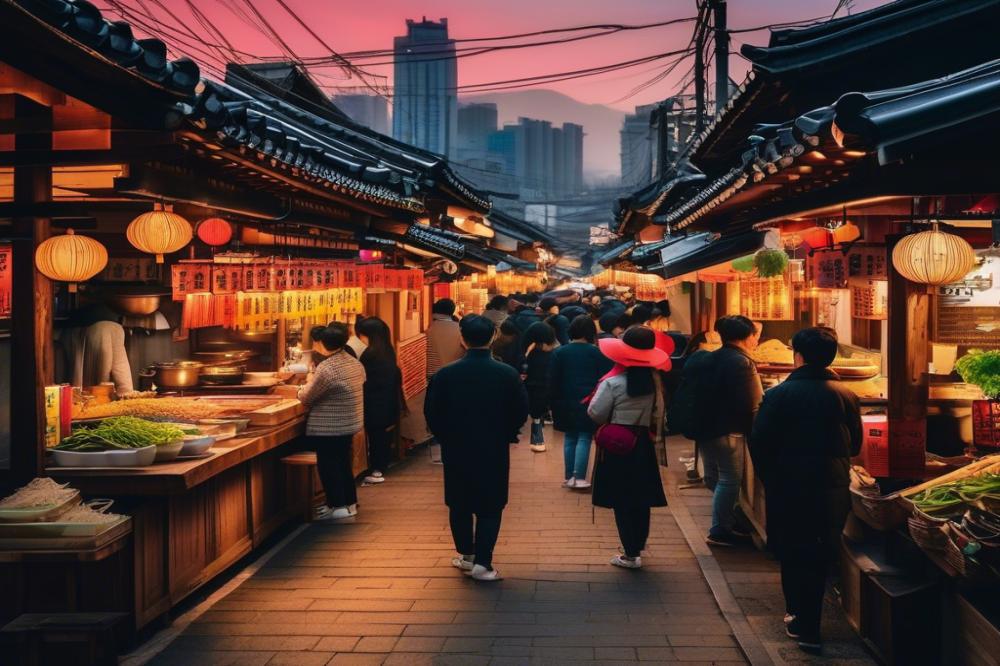

Ingredients List with Quantities
Gather the following items for a delicious homemade dish. The right ingredients are essential in Korean cuisine. You will need:
- Noodles: 400g Chinese wheat noodles
- Black bean sauce: 150g Chunjang (Korean black soybean paste)
- Pork: 200g diced pork belly or shoulder
- Onion: 1 large, diced
- Zucchini: 1 medium, diced
- Potato: 1 medium, diced
- Carrot: 1 medium, diced
- Vegetable oil: 2 tablespoons
- Sugar: 1 tablespoon
- Water: 2 cups
- Sesame oil: 1 teaspoon
- Salt: to taste
- Green onion: for garnish
Cooking Instructions
Now it’s time to make this savory dish. Follow these easy steps to prepare the black bean noodles.
Begin by cooking the noodles. Follow the instructions on the package. Typically, boiling them in salted water for about 5 to 7 minutes is sufficient. After cooking, drain and rinse with cold water. This stops the cooking process and keeps them firm.
Next, heat 2 tablespoons of vegetable oil in a large pan over medium heat. Once the oil is hot, add the diced pork. Cook until it gets a nice golden brown color. This adds flavor to your sauce.
After that, toss in the diced onion, zucchini, potato, and carrot. Stir these vegetables for about 3 to 5 minutes. The vegetables should start to soften but still retain some crunch.
Now, mix in the 150g of Chunjang black bean sauce and 1 tablespoon of sugar. Stir this mixture well to coat all the ingredients. The sugar balances the bitterness of the black bean sauce, making it rich and flavorful.
After mixing, pour in 2 cups of water. Bring this to a simmer, and let it cook for another 10 minutes. The sauce should thicken slightly. If it seems too thick, you can always add a bit more water.
Finally, add a teaspoon of sesame oil and season with salt to taste. This adds a lovely aroma and depth of flavor to the dish. Taste it and adjust the seasoning based on your preference.
When serving, place a generous portion of noodles in a bowl. Top with the black bean sauce and vegetables. Garnish with chopped green onion for a nice pop of color. Enjoy the amazing taste of this popular street food at home.
Cooking Tips
Some tips can help you achieve the best results. Always cook the vegetables to your desired tenderness. If you like them crispier, don’t cook them as long. For a spicier note, consider adding some gochugaru, which is Korean chili powder, to your sauce. This can give your dish an extra kick.
Make sure to use high-quality Chunjang for an authentic flavor. Experiment with different vegetables based on your taste. Bell peppers, mushrooms, or even corn can make delicious additions. The beauty of this recipe lies in its versatility.
With these steps and tips, your homemade black bean noodles are bound to impress. Dive into the world of Asian recipes and enjoy this delightful meal with friends and family.
Nutritional Information
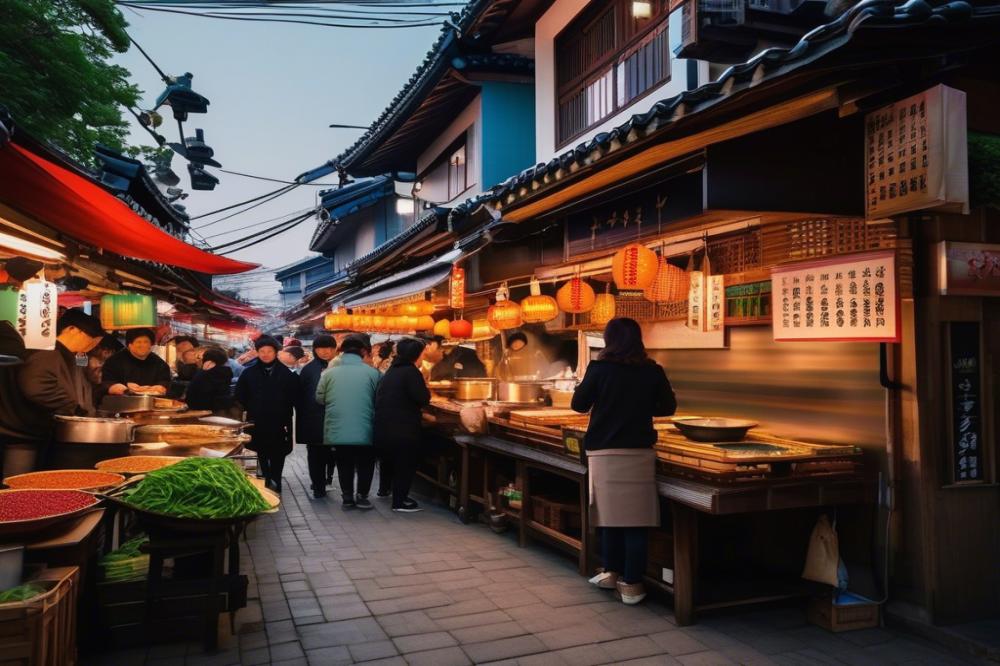

Jjajangmyeon is a savory dish that many love, especially as a popular street food in Korea. It consists mostly of noodles topped with a rich black bean sauce. This meal can be both hearty and fulfilling, but understanding its nutritional content helps in making informed choices.
Overview of Nutritional Content
Each serving provides essential nutrients, though the balance can vary based on the recipe. Typically, a single serving of homemade jjajangmyeon offers a combination of carbohydrates, fats, and protein along with vitamins from added vegetables. The dish is known for its energetic qualities due to its carbohydrate content, mainly coming from the noodles.
Breakdown of Calories, Protein, Fats, and Carbohydrates per Serving
On average, one serving contains approximately 600 to 700 calories. Carbohydrates usually make up about 100 grams, mainly from noodles. Protein can range from 15 to 20 grams, depending on the ingredients used. Fats often measure around 20 to 30 grams. The black bean sauce contributes to this balance, filled with flavor but somewhat higher in sodium.
Health Benefits and Considerations of Main Ingredients
Some ingredients offer health benefits. Black bean sauce contains antioxidants and has been linked to various health perks. Vegetables like zucchini and onions add fiber and vitamins. However, it’s important to be cautious about the sodium levels, especially if made with store-bought sauces. Choosing fresh ingredients can optimize nutrient levels.
Suggestions for Healthier Variations
Modifying the recipe can make this dish even better for your health. Consider using whole wheat noodles to boost fiber intake. Adding more vegetables like carrots or bell peppers can enhance flavor and nutrition. Reducing the amount of oil in the black bean sauce helps cut down unhealthy fats. Finally, experiment with lean protein sources like chicken or tofu to provide a healthier protein option. These substitutions create lighter alternatives without losing the dish’s beloved taste.
Cooking Tips and Variations
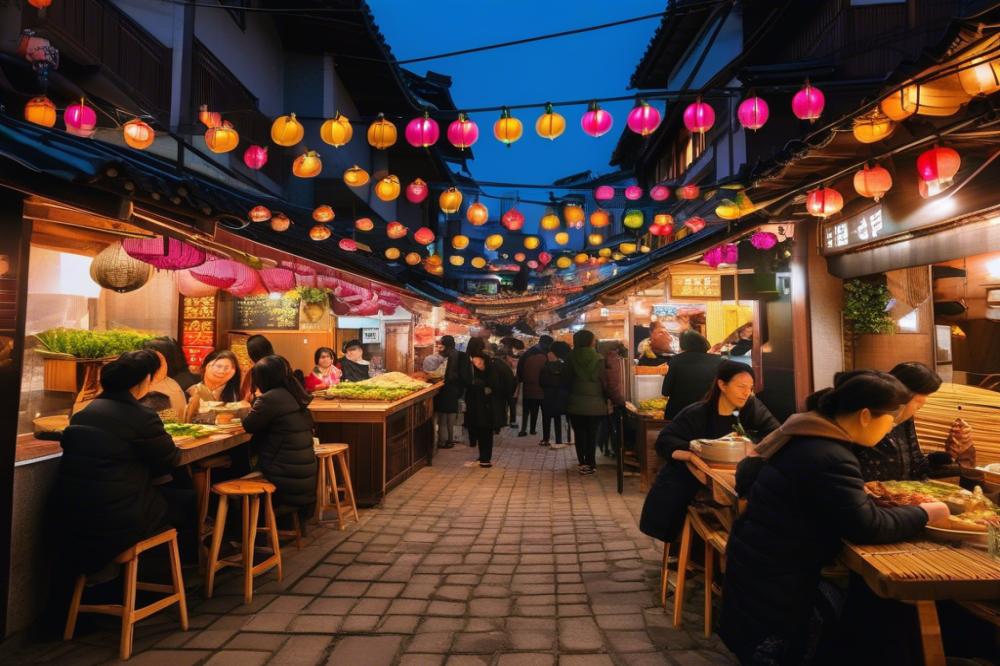

Perfecting your cooking techniques can make all the difference when making this savory dish. Start by using a sturdy pan for frying the pork or vegetables. This prevents sticking and helps achieve a nice brown color. When it comes to the vegetables, cut them into even pieces. Uniformity ensures they cook at the same rate, making every bite delicious.
If you find yourself missing some ingredients, worry not! There are plenty of substitutions. Instead of using pork, try chicken or tofu for a vegetarian option. Different types of vegetables can also enhance the experience. Onions, zucchini, or even mushrooms work well too. Feel free to mix and match according to what you have in your kitchen.
Creative Variations of Jjajangmyeon
To add a little creativity to this dish, consider making a spicy version. Adding gochujang, the Korean chili paste, gives it a kick that many enjoy. Another variation is incorporating seafood, like shrimp or squid. This twist will bring a fresh flavor to the black bean sauce. Experimenting with toppings is also fun. Try adding a poached egg or some sesame seeds for an extra touch.
Serving Suggestions with Side Dishes
When serving your Korean cuisine, it’s nice to complement the noodles with side dishes. Kimchi is a classic choice that adds spice and tanginess. You might also consider serving pickled radishes or a fresh salad. These sides can enhance the meal and provide balance to the richness of the black bean sauce. Enjoy your homemade creation with family or friends, and share the joy of Asian recipes.
The Final Taste of Jjajangmyeon
Making Jjajangmyeon is an art form that connects culture with flavor. It takes practice to master the technique and achieve the perfect balance of savory sauce and fresh noodles. Each step, from frying the black bean paste to tossing in vegetables and protein, plays an important role in creating this delicious dish. Emulating restaurant-quality jjajangmyeon in your own kitchen is a rewarding challenge.
Cooking this dish at home is not just about following a recipe. It’s about enjoying the process and sharing the meal with friends and family. Imagine the warm aroma filling your kitchen as you bring everything together. Each spoonful of the thick, luscious sauce over the chewy noodles is truly satisfying. Do not hesitate to give it a try—you might surprise yourself with how well it turns out.
Exploring other classic offerings of Korean cuisine can further enhance your culinary skills. Dishes like bibimbap or kimchi stew share the same spirit of creativity and comfort. Each recipe allows for personal touches and variations, which make cooking even more enjoyable.
Most importantly, jjajangmyeon holds a special place in Korea’s dining traditions. It’s often enjoyed during celebrations, making it a dish filled with joyful memories. Finding pleasure in cooking this iconic noodle dish can become an experience that enriches your life. So grab those ingredients and start your journey into the world of flavors. It promises to be a delightful adventure.

